Last Updated on June 7, 2023
The special edition magazine Newsweek: Downton Abbey looks closely at the beloved British costume drama. “Downton on Location,” which spotlights nine of the most stunning settings from the period series and film, is just one of articles included in Newsweek: Downton Abbey.
Newsweek has been kind enough to share their “Downton” locations article with us, to give you a taste of Newsweek: Downton Abbey. It’s an exclusive sneak peek at the magazine, just for Willow and Thatch readers.
With the saga coming to a close after this year’s “Downton Abbey” film, Newsweek has gone back through the past nine years to compile everything a fan could want to know and everything an expert should remember about the Crawleys and their estate, including a complete episode guide, and an exclusive first look at the upcoming film.
Since its premiere in the U.K. in 2010, “Downton Abbey” has given viewers all over the world a superbly detailed look at a world that no longer exists. Beginning on the day the Titanic sank and moving through World War I and the massive political changes that followed, “Downton Abbey” is more than a drama focusing on the owners and employees of a stately home: It is a window through which we can see a glimpse of early-20th-century life, from the novelty of the first electric toaster to the antiquated social rules that govern the characters.
The scenery on “Downton Abbey” is as much a character as anyone who makes the house what it is. By filming in some of England’s finest remaining great houses, from Highclere, which fans will know as Downton, to the stunning vistas at Inveraray Castle, where Rose’s parents live, “Downton” gained acute authenticity.
But in addition to the castles and manors, there are also glimpses to be had through Downton of a more everyday kind of 20th century life. Visitors to Downton who arrive by train come through the historic Horsted Keynes Station, which still looks much as it did in the 1920s. Ranging from the far south of the country to the Scottish Highlands, “Downton’s” settings give the viewer a one-of-a-kind tour of Britain.
Nine “Downton Abbey” filming locations every fan should know are:
Highclere Castle – Hampshire, England
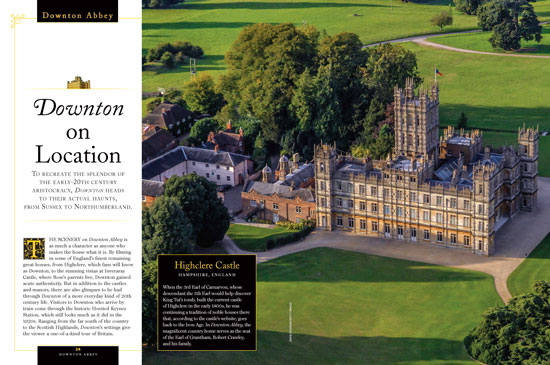
When the 3rd Earl of Carnarvon, whose descendant the 5th Earl would help discover King Tut’s tomb, built the current castle of Highclere in the early 1800s, he was continuing a tradition of noble houses there that, according to the castle’s website, goes back to the Iron Age. In “Downton Abbey,” the magnificent country home serves as the seat of the Earl of Grantham, Robert Crawley, and his family.
Lincoln Castle – Lincoln, England
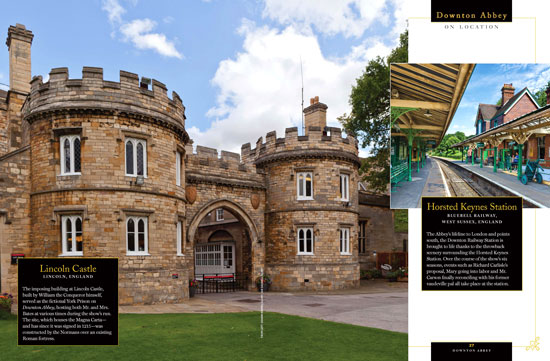
The imposing building at Lincoln Castle, built by William the Conqueror himself, served as the fictional York Prison on “Downton Abbey,” hosting both Mr. and Mrs. Bates at various times during the show’s run. The site, which houses the Magna Carta—and has since it was signed in 1215—was constructed by the Normans over an existing Roman fortress.
Horsted Keynes Station – Bluebell Railway, West Sussex, England
The Abbey’s lifeline to London and points south, the Downton Railway Station is brought to life thanks to the throwback scenery surrounding the Horsted Keynes Station. Over the course of the show’s six seasons, events such as Richard Carlisle’s proposal, Mary going into labor and Mr. Carson finally reconciling with his former vaudeville pal all take place at the station.
Inveraray Castle – Argyll and Bute, Scotland
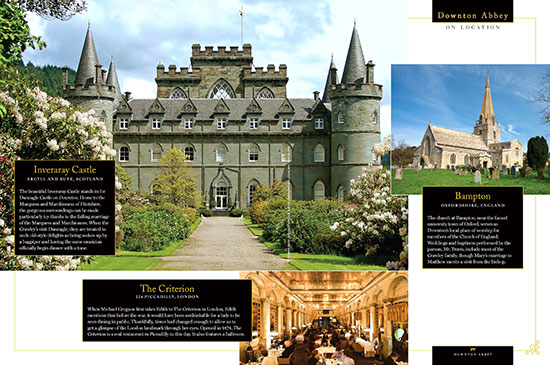
The beautiful Inveraray Castle stands in for Duneagle Castle on “Downton.” Home to the Marquess and Marchioness of Flintshire, the gorgeous surroundings can be made particularly icy thanks to the failing marriage of the Marquess and Marchioness. When the Crawley’s visit Duneagle, they are treated to such old-style delights as being woken up by a bagpiper and having the same musician officially begin dinner with a tune.
The Criterion – 224 Piccadilly, London
When Michael Gregson first takes Edith to The Criterion in London, Edith mentions that before the war, it would have been unthinkable for a lady to be seen dining in public. Thankfully, times had changed enough to allow us to get a glimpse of the London landmark through her eyes. Opened in 1874, The Criterion is a real restaurant in Piccadilly to this day. It also features a ballroom.
Bampton – Oxfordshire, England
The church at Bampton, near the famed university town of Oxford, serves as Downton’s local place of worship for members of the Church of England. Weddings and baptisms performed by the parson, Mr. Travis, include most of the Crawley family, though Mary’s marriage to Matthew merits a visit from the bishop.
Byfleet Manor – Mill Lane, Byfleet, Surrey, England
Byfleet Manor, which serves as the Dowager House on “Downton Abbey,” was also featured in the 2014 Disney Film Into the Woods as Cinderella’s house. In reality, the manor is a 17th-century house built on the site of a royal hunting lodge. The original lodge was given by King Edward II to his favorite—and, in all likelihood, lover—Piers Gaveston in the early 1300s. The Dowager Countess would not approve.
West Wycombe House – Buckinghamshire, England
The interior shots of Lady Rosamund’s London home are shot at West Wycombe House, a 45-acre estate built for the famous libertine peer Sir Francis Dashwood, 2nd Baronet. The architecture is inspired by Venetian villas of the early 1700s, when the Baronet was in his prime. Dashwood was a founding member of the famous Hellfire Club, whose wealthy members founded it as a safe haven for pleasures the decorum of the era prevented them from enjoying publically.
Alnwick Castle – Alnwick, Northumberland, England
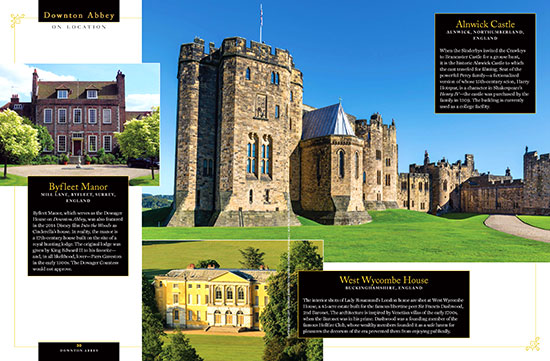
When the Sinderbys invited the Crawleys to Brancaster Castle for a grouse hunt, it is the historic Alnwick Castle to which the cast traveled for filming. Seat of the powerful Percy family—a fictionalized version of whose 15th-century scion, Harry Hotspur, is a character in Shakespeare’s “Henry IV”—the castle was purchased by the family in 1309. The building is currently used as a college facility.
If you enjoyed this post, you’ll want to wander over to The Period Films List. You’ll also like History in Downton Abbey, The Post-Downton Survival Guide and Downton’s Cast in Other Period Dramas. Also see our review of The Chaperone.

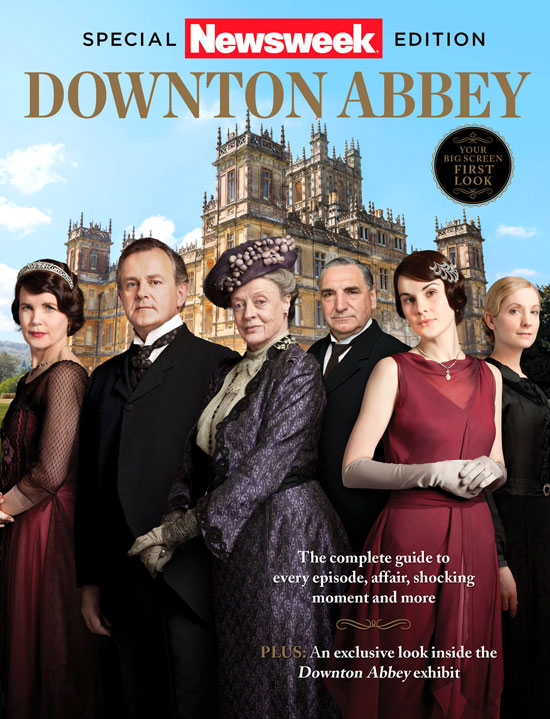

Kay
September 16, 2019 at 1:41 am (5 years ago)I would absolutely love to win your fabulous prize.❤️